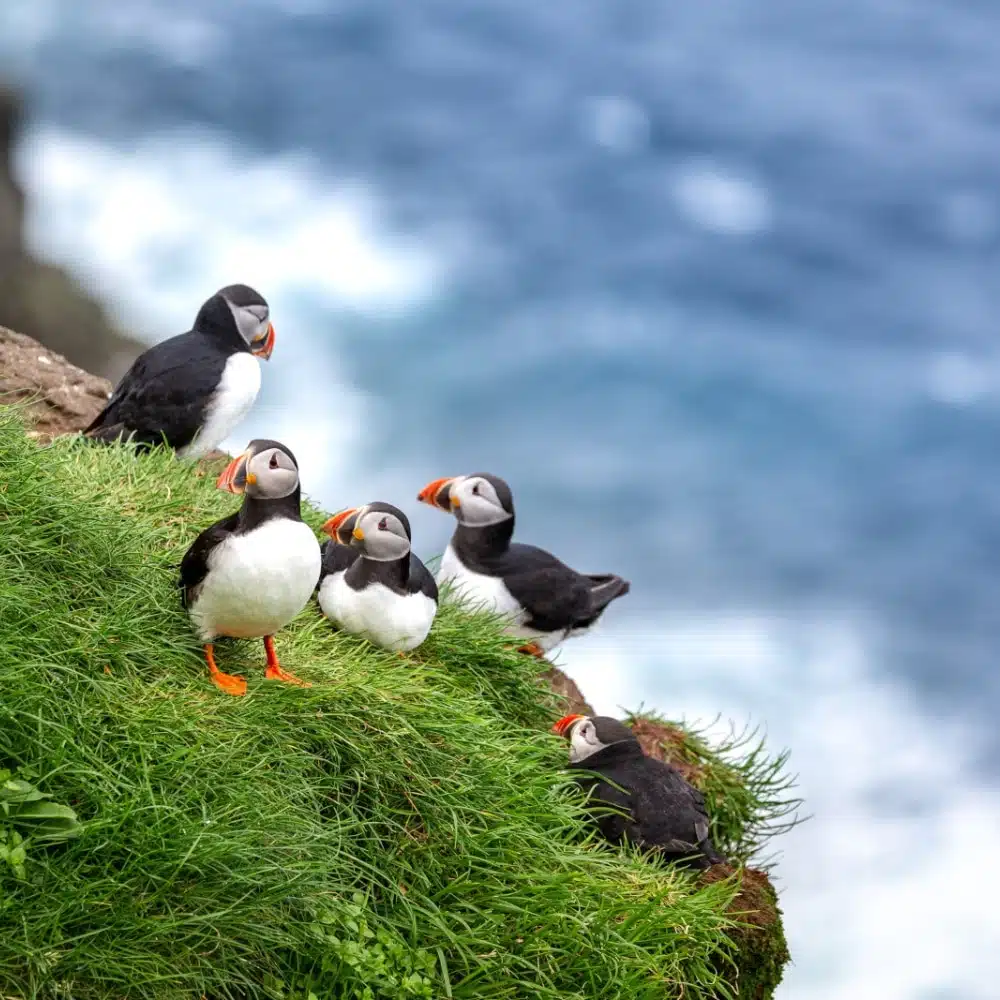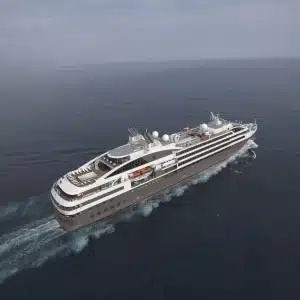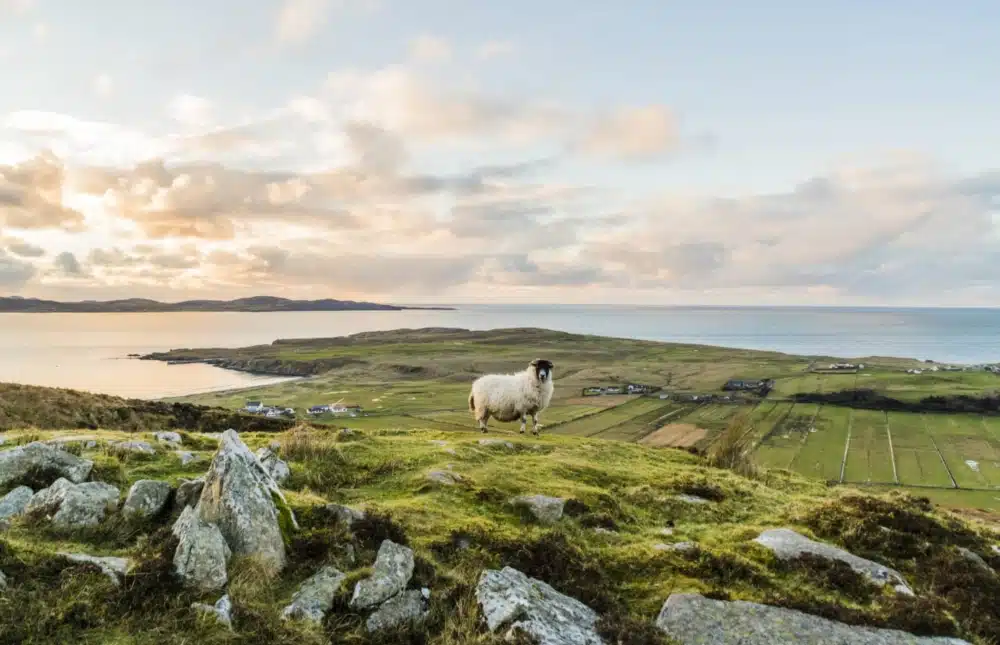Wild islands and archaeological mysteries
Off the coast of the Hebrides, the North Atlantic Ocean, and the far north of Ireland, there are many little-known sites that are well worth taking the time to visit. Places steeped in thousands of years of history that are also irresistible to birdwatchers.
Saint Kilda seabird sanctuary
This isolated volcanic archipelago, a UNESCO Heritage site with steep cliffs and savage beauty, has a rather unusual history. The main island, Hirta, is now uninhabited, but that was not always the case. In summer, groups of volunteers come to restore the ruined buildings: thatched dwellings, known as black houses, built by the people who eked out a living in this rocky wilderness until 1930, surviving by eating birds (northern gannets, fulmars) and their eggs.
Today, with man, their main predator, gone, northern gannets, Atlantic puffins, gulls, northern fulmars and Arctic skuas are thought to number over a million on the archipelago. There are also Neolithic remains all over the island, mainly cleits (stone storage huts).

The Heart of Neolithiuc Orkney, an inestimable archaeological treasure
North of Mainland, Orkney’s largest island, contains remnants of one of the most important prehistoric cultural landscapes in Europe. The site contains most of the archipelago’s Neolithic buildings, the four main ones being listed as UNESCO World Heritage sites. Skara Brae is the best-preserved Neolithic village in Europe and was discovered in 1850. Be sure to explore the buildings and covered galleries as well as the furniture, pottery, jewellery, and tools found there. These items give us an accurate picture of life in Europe 5,000 years ago. Meanwhile, the ceremonial circles of monoliths in Stenness and Brodgar, are surrounded by a rather mystical aura. It is best to visit them at sunrise and sunset when the light creates a unique atmosphere to let your imagination run free.
Finally, the large, chambered cairn and passage grave at Maeshowe is thought to date back to over 2000 years BCE. You can see the many runic inscriptions left by the Vikings, as well as a drawing of a dragon, which became the symbol of Maeshowe. Even though they are still shrouded in mystery, these places and monuments are an amazing testimony not only to the spiritual beliefs, habits, and customs but also to the social structures of this prehistoric period.

The Faroe Islands, a paradise for sheep and photographers
Located between the Shetlands and Iceland, the archipelago of the eighteen Faroe Islands is a perfect illustration of everything that is most magnificent and wild about nature. Gigantic fjords, flowing valleys and green moorland, steep cliffs, rushing waterfalls, picturesque little wooden houses with grass roofs; keen photographers won’t rest until they have captured the full unspoilt beauty of these breath-taking landscapes. Although the territory is under Danish protectorate, the 50,000 inhabitants – proud of their Nordic roots, a heritage of Scandinavia and the Viking people – have had an autonomous government since 1948.
As for the 80,000 sheep, they are so much a part of the landscape that the archipelago owes them its name: Føroyar or “sheep islands“. Their husbandry was the main activity of the islands until the 19th century, and it was thanks to them, as well as to fishing, whaling and bird hunting, that the Faroese were able to survive for so long. Today, fishing is the islands’ main source of income, sheep continue to graze on the ever-green grass, and there are over 300 species of birds.

The Giant’s Causeway, a natural phenomenon
On the seashore, on the edge of the cliffs of the Antrim Plateau, head off to discover a very curious volcanic formation, classified as a UNESCO World Heritage site. The Giant’s Causeway is made up of 40,000 interlocking basalt columns, horizontally fractured and positioned to form an incredible pavement that juts out into the sea. Some of these columns are up to twelve metres high, creating a landscape that is as mind-boggling as it is spectacular. This place owes its name to the fact that it inspired the legend of two giants, one Irish, the other Scottish, who quarrelled incessantly.
Following a more heated argument, the Irish giant is said to have decided to build a road across the sea to Scotland. Less poetic, geological studies attribute this phenomenon to volcanic activity dating from the Tertiary period, 50 to 60 million years ago. These formations are the result of the movement of plate tectonics, where the lava flow would have cooled at such a speed that it took on these hexagonal shapes.

The bonus for Alain Bidart, ornithologist and PONANT naturalist-guide
“In this part of the world, the observation of seabirds and their colonies is fascinating: northern gannets, black-legged kittiwakes, common guillemots, razorbills… But out of all of them, I’ve got a soft spot for the Atlantic puffin, a bird with irresistible charm and a colourful beak, which is easy to approach. In the Faroe Islands, on Mykines, you will be greeted by thousands of Atlantic puffins. While in the St. Kilda Archipelago, there is a large colony of a bird which is found in very large numbers only in this region: the northern gannet.”
Photos credits : ©Richard Nicholl / ©AdobeStock-Francesco Riccardo Iacomino / ©Studio PONANT/Laurence Fischer / ©Andrew Mayovskyy / ©iStock-Aitormmfoto / ©iStock-barbaraaaa

PONANT takes you there
Explore wild islands and shores on an unforgetable cruise



